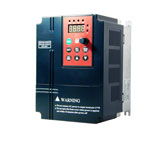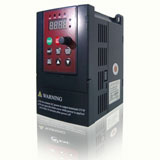VFD shaft voltage
Regarding bearing currents and what causes them is referred to as "shaft voltage". It is produced by both non-symmetrical magnetic flux pathways in the stator and rotor magnetic circuits as well as the distributed capacitance linking the stator and rotor. Shaft voltage is not produced by the harmonic voltages and currents in the stator windings being supplied from a VFD; however, for VFDs with high frequency PWM carriers, the distributed capacitance will look like a low impedance pathway and can produce a greater shaft voltage than that produced in a similar direct drive machine. It is important to note that shaft voltage can be produced in non-VFD applications as well as in DC machines and has been observed in both motor and generator applications.
When the rotating shaft develops a voltage as described above and the voltage has sufficient magnitude to breakdown the dielectric strength of the bearing lubrication, a current can flow from one end of the shaft (call it the positive end or source) through a bearing to the machine frame and return through the opposite bearing to the shaft thus completing an electrical circuit. Obviously, electrical currents will cause bearing systems to become damaged and there are methods to minimize (or block) the effects of the current flow so that the bearings can be protected from electrical pitting.
When the rotating shaft develops a voltage as described above and the voltage has sufficient magnitude to breakdown the dielectric strength of the bearing lubrication, a current can flow from one end of the shaft (call it the positive end or source) through a bearing to the machine frame and return through the opposite bearing to the shaft thus completing an electrical circuit. Obviously, electrical currents will cause bearing systems to become damaged and there are methods to minimize (or block) the effects of the current flow so that the bearings can be protected from electrical pitting.



